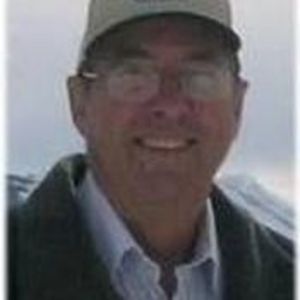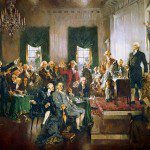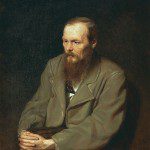
The 25 February 2018 edition of the Interpreter Radio Show is now available online for your listening pleasure:
The discussion focuses on women and veils in New Testament times as well as two Book of Mormon names.
Since Interpreter was recently outed publicly (on an ex-Mormon message board) as merely my personal vanity project, I guess there’s no point in hiding the fact that, for this particular broadcast, I played the parts of Martin Tanner as host, along with guests Steve Densley, Matt Bowen, and — this is my proudest acting achievement of the night — Lynn Wilson. Getting her voice right was, I confess, just a bit of a challenge.
***
If there are any out there who want to know and understand a little bit more about the mean-spirited monster whose foul and mendacious blog this is, an opportunity has now appeared to do so:
“10 questions with Daniel C. Peterson”
***
I’ve accepted an invitation to speak at Freedom Fest 2018, which will be held 11-14 July in Las Vegas. Participants probably won’t need snow gear.
Details to follow.
***
I’ve also accepted an invitation to speak at BYU Education Week 2018. (I haven’t spoken there for at least two years, I think, so I felt it time to return.) Here’s the description that I sent to the head of Ed Week of what I propose to discuss:
Series Title: Four Fresh Arguments in Support of the Book of Mormon
1st Class: Ancient Old World Languages in the New World
This session will introduce class members to evidence suggesting ancient Hebrew and Egyptian influence on a major Amerindian language family—influence that is consistent with the account given in the Book of Mormon.
- Nephi explains that he made his record “in the language of my father, which consists of the learning of the Jews and the language of the Egyptians” (1 Nephi 1:2).
- Is there any evidence that such languages ever existed in the New World, or that they influenced any New World languages? As a matter of fact, yes, there is.
- Features of the Uto-Aztecan language family strongly suggest early influence from both Semitic languages (notably Hebrew and Aramaic) and ancient Egyptian.
- I will be drawing primarily on the work of Brian Stubbs, attempting to make it accessible to non-specialists.
2nd Class: Semitic Wordplays in the Book of Mormon
Linguistic puns and wordplays are common in the Hebrew Bible. Did they also exist in the Book of Mormon? Apparently so. Although, since wordplays and puns typically don’t survive translation, they don’t directly appear in the nineteenth-century English version, they can be plausibly reconstructed—and they become significant evidence that the Book of Mormon wasn’t originally composed in English.
- Hebrew words, like Semitic words generally, are typically constructed from triconsonantal roots—that is, from words constructed on the basis of clusters of three consonants.
- Such clusters can serve as the basis for verbs and nouns and proper names. Quite commonly, that leads to wordplays and puns that, while they’re clever in the original language, are difficult if not impossible to reproduce in another tongue.
- Scholars trained in Semitic languages and in Egyptian, however, are often able to reconstruct how the text might originally have read and, thus, to detect such original-language games.
- I will draw on the work of Dr. Matthew Bowen, of Brigham Young University-Hawaii.
3rd Class: Early Modern English in the Book of Mormon
The English Book of Mormon contains many archaic features. Do they represent the early nineteenth-century frontier English of Joseph Smith? Are they derived from the 1611 King James Bible? In fact, some elements of the language of the English Book of Mormon seem to come from a period of the language that predates both Joseph Smith and King James. Why is this significant? What does it mean?
- Many critics and even some Latter-day Saints have assumed that the language of the Book of Mormon is Joseph Smith’s, filtered through his familiarity with the King James translation of the Bible. This appears to be incorrect.
- Apparent grammatical errors in the Original Manuscript of the Book of Mormon have been mocked by critics since 1830. New research suggests that most if not all of those “errors” actually represented correct usage in Early Modern English (which is usually dated as lasting from the late 15th century to the mid to late 17th century, i.e. mostly before the King James Bible).
- Several other elements of the original English dictated text of the Book of Mormon (for example, vocabulary and syntax) are also peculiar to Early Modern English.
- Such features cannot be derived from either Joseph Smith’s rustic New England dialect or from the King James Bible; they cannot be found in either of those sources.
- I will be summarizing extensive work done by Dr. Royal Skousen of BYU and by Dr. Stanford Carmack.
4th Class. A Whole New Archaeological World
While it would be wrong to claim that there is archaeological proof for the Book of Mormon, or even that all archaeological questions or objections have been answered, there is positive archaeological evidence. Moreover, there are some intriguing new archaeological discoveries that are consistent with, even supportive of, the book’s claims.
- An inscription has been found that may well represent the “signature” of the prophet Isaiah.
- New evidence has been found [I suppress public mention of the subject here on this blog, since it isn’t my work and since it hasn’t yet been published]
- Revolutionary new technology has disclosed an area in Pre-Columbian Mesoamerica that corresponds in striking ways with descriptions in the Book of Mormon.
- This lecture will draw from very recent archaeological reports out of Israel and Guatemala, as well as [I hope, since it hasn’t yet been published and I haven’t yet spoken to him about using it!] from ongoing work by Neal Rappleye.












